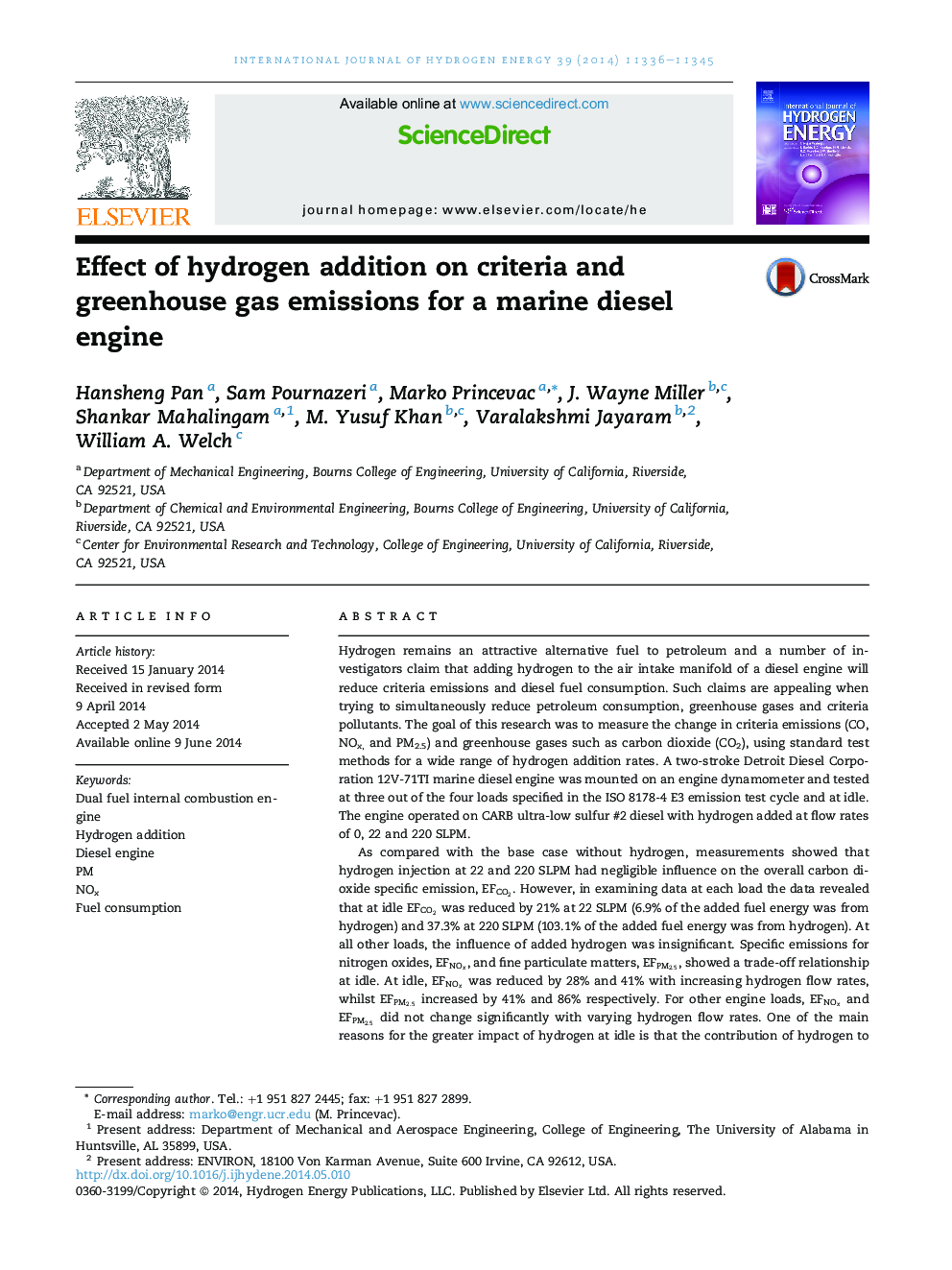| Article ID | Journal | Published Year | Pages | File Type |
|---|---|---|---|---|
| 1272276 | International Journal of Hydrogen Energy | 2014 | 10 Pages |
•The emissions from a diesel engine with hydrogen injection were investigated.•At higher loads hydrogen injection had negligible influence on the emissions.•Hydrogen injection of 22 and 220 SLPM had significant impacts on emissions at idle.•With an electrolyzer the overall system energy consumption increased
Hydrogen remains an attractive alternative fuel to petroleum and a number of investigators claim that adding hydrogen to the air intake manifold of a diesel engine will reduce criteria emissions and diesel fuel consumption. Such claims are appealing when trying to simultaneously reduce petroleum consumption, greenhouse gases and criteria pollutants. The goal of this research was to measure the change in criteria emissions (CO, NOx, and PM2.5) and greenhouse gases such as carbon dioxide (CO2), using standard test methods for a wide range of hydrogen addition rates. A two-stroke Detroit Diesel Corporation 12V-71TI marine diesel engine was mounted on an engine dynamometer and tested at three out of the four loads specified in the ISO 8178-4 E3 emission test cycle and at idle. The engine operated on CARB ultra-low sulfur #2 diesel with hydrogen added at flow rates of 0, 22 and 220 SLPM.As compared with the base case without hydrogen, measurements showed that hydrogen injection at 22 and 220 SLPM had negligible influence on the overall carbon dioxide specific emission, EFCO2EFCO2. However, in examining data at each load the data revealed that at idle EFCO2EFCO2 was reduced by 21% at 22 SLPM (6.9% of the added fuel energy was from hydrogen) and 37.3% at 220 SLPM (103.1% of the added fuel energy was from hydrogen). At all other loads, the influence of added hydrogen was insignificant. Specific emissions for nitrogen oxides, EFNOxEFNOx, and fine particulate matters, EFPM2.5EFPM2.5, showed a trade-off relationship at idle. At idle, EFNOxEFNOx was reduced by 28% and 41% with increasing hydrogen flow rates, whilst EFPM2.5EFPM2.5 increased by 41% and 86% respectively. For other engine loads, EFNOxEFNOx and EFPM2.5EFPM2.5 did not change significantly with varying hydrogen flow rates. One of the main reasons for the greater impact of hydrogen at idle is that the contribution of hydrogen to the total fuel energy is much higher at idle as compared to the other loads. The final examination in this paper was the system energy balance when hydrogen is produced by an on-board electrolysis unit. An analysis at 75% engine load showed that hydrogen production increased the overall equivalent fuel consumption by 2.6% at 22 SLPM and 17.7% at 220 SLPM.
